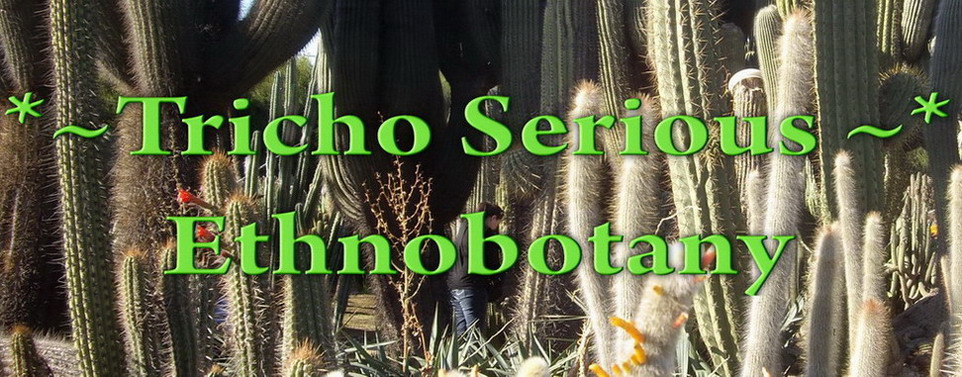From Backebergs Trichocereus Lexicon, T. smrzianus (Backbg.) Backbg. n.comb. (Eehinopsis smrziana Backbg., Kaktus-ABC, 219, 412. 1935 (1)
Bo. spherical at first, later cylindric, to c. 16 cm h. and more, becoming thicker, finally stoutly columnar, younger plants very variable, Sp. either short or longer, epidermis variously coloured, individuals occasionally to 40 cm long., ± prostrate and then ascending, mostly fresh green at first, later ±greyish-green, to 20cm 25 in age; Ri. c. 15, later to 3 cm br.; Sp. very variable, c. 7—14 at first, irregularly arranged, all thin, sharp, radiating, acicular to finer, from whitish to deep golden-brown, sometimes flecked or dark below; Fl. to 12 cm long., 12 cm 25, white, Pet, in several series; Sti. very long and thin.—N. Argentina (Quebrada Escoipe, upper part). (Fig. 440.)
Flowered for the first time recently in Rubingh’s collection, Soestdijk, Holland, to provide the above floral data; this variable spec. was referred for a time to Soehrensia because it closely resembles S. grandis in some characters; however, the Fl. have now been seen to be quite dissimilar. Since the tube of the above spec. is not very stout, it could equally well remain under its first name (Echinopsis), but stouter old St. look more like Trichocereus. The spec. thus belongs to the group which represents a transition from Trichocereus to Echinopsis. A similar situation occurs in some Chilean genera. These problems show that convential differentiation, using established criteria, is sometimes a necessity since Nature—by processes which still remain to be studied—creates every imaginable form, without any “classificatory principle” such as we require for our systematic arrangements. In general, delimitations of this kind reflect the facts of Nature, but demarcation still has to be made in accordance with clear guide-lines. It could also be argued for instance that Echinopsis shaferi—a plant growing to 1.5 m h. and to almost 20 cm 25, and completely trichocereoid in appearance—should be referred to Trichocereus.
Got this from an online vendor. ~*
Bo. spherical at first, later cylindric, to c. 16 cm h. and more, becoming thicker, finally stoutly columnar, younger plants very variable, Sp. either short or longer, epidermis variously coloured, individuals occasionally to 40 cm long., ± prostrate and then ascending, mostly fresh green at first, later ±greyish-green, to 20cm 25 in age; Ri. c. 15, later to 3 cm br.; Sp. very variable, c. 7—14 at first, irregularly arranged, all thin, sharp, radiating, acicular to finer, from whitish to deep golden-brown, sometimes flecked or dark below; Fl. to 12 cm long., 12 cm 25, white, Pet, in several series; Sti. very long and thin.—N. Argentina (Quebrada Escoipe, upper part). (Fig. 440.)
Flowered for the first time recently in Rubingh’s collection, Soestdijk, Holland, to provide the above floral data; this variable spec. was referred for a time to Soehrensia because it closely resembles S. grandis in some characters; however, the Fl. have now been seen to be quite dissimilar. Since the tube of the above spec. is not very stout, it could equally well remain under its first name (Echinopsis), but stouter old St. look more like Trichocereus. The spec. thus belongs to the group which represents a transition from Trichocereus to Echinopsis. A similar situation occurs in some Chilean genera. These problems show that convential differentiation, using established criteria, is sometimes a necessity since Nature—by processes which still remain to be studied—creates every imaginable form, without any “classificatory principle” such as we require for our systematic arrangements. In general, delimitations of this kind reflect the facts of Nature, but demarcation still has to be made in accordance with clear guide-lines. It could also be argued for instance that Echinopsis shaferi—a plant growing to 1.5 m h. and to almost 20 cm 25, and completely trichocereoid in appearance—should be referred to Trichocereus.
Got this from an online vendor. ~*


No comments:
Post a Comment